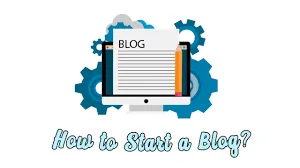Blog Post Outlining: The Last Guide You’ll Need + Template

Introduction
Creating an outline is a vital activity in the process of writing, Which most bloggers have to go through to make their writing intelligent and logical. For instance, no matter how experienced a writer one is or how new in writing an outline maps out the structure and organization of the particular blog post.
This is true to the extent that the myriad of concepts and ideas can be overwhelming, but when a clear and concise outline is systematically developed the writing will have improved quality which leads to making it easier for the readers to understand the text.
Why Blog Post Outlining is Important in the Content Writing Process
Structuring is very useful in blog posts because it enables the writer to plan before they start blogging. An outline is important in writing because it minimizes chance of getting ‘stuck’ by giving a roadmap of what is expected.
It also aids in concentration, to make certain that you dont sway from issue to issue or explain additional than necessary. In the long run, you get the benefit of a well-structured post which provides the readers with more information and makes your post easier to read or follow thus providing a lasting positive experience.
The Benefits of Creating a Solid Blog Post Outline
Having a clear structure of a blog post provides few advantages. It also enables you to create your post in advance, thus saving you time because you do not have to make significant changes on the article later. Using an outline guarantees that your points presented are arranged in the right order and flow well from one idea to another.
This way it is also possible to pinpoint significant aspects, and thus avert missing some crucial detail. This structured manner of working enhances the probability of posting a well received post on the social media.
Effective blogging structure are as follows:
,there are several elements that must be included in a good blog post writing that you would like to achieve. Others are: The first is a simple and elegant introduction which allows you to create a context for your post. Further headings should encompass main ideas or the division of a content.
Since it is better for each section to be dedicated to one particular theme it does not need much adjusting. Make sure that for every point you are making remember to include backup information and illustrations.
Step-by-Step Guide to Creating a Blog Post Outline
If you follow the following simple and clear outline, it will not be a challenge to create an outline for your blog post. The first step would be to identify what specific objective does the blog post need to achieve? And who is the intended audience? After that, discuss the primary concerns we are going to focus on.
These points can be arranged in a sequential order and then make subordinate to main points. Do not forget to reserve a slot for an introduction and a conclusion. Thus, if done well, the work of creating an outline will ease the flow of the drafting process as you will already know what you are going to write.
How to Choose the Right Structure for Your Blog Post
Selecting the rightful structure of the blog post also lies on the type of information to be posted or shared out. For instance, it is expected that a how-to content should have subheadings that follow the steps on the topic while a listicle content should have subheadings that follow the numbers.
When you are writing an opinion article, the structure of the article follows an argument or persuasive format. The idea is simple: always make the structural format correspond to the message that you want to convey and the target readership.
How to Create a Compelling Outcome When Writing Your Outline
First of all, a reader should be interested, this is why an entriking introduction is obligatory. In your outline of the topic, you should include how to present the main topic of discussion in simple and clear words. The first step is to have a hook, that is, a search question, an interesting fact, or an illustrative story.
Then give readers a brief idea about what the post will entail, to keep them engaged in the rest of the piece. The catchy headlines encourage your readers to proceed with your blog post and understand what tangible benefits they will receive from your creation.
Organizing Your Blog Post Body: Tips for Clarity and Flow
In every blog, it is very important to arrange the body part of the blog in a way that it passes all the required tests of organization. It is possible to divide the body into sections; each concerned with the development of a specific idea. Stack the sections intuitively with the overlaps in order to make them easily understandable from section to section.
As history teaches us, each section should be brief and to the point, and you should use facts, examples or research data in the support of your arguments. Mattress visual appeal should therefore be emphasized in bullet points, headings or numbered lists, so that the reader can follow easily the argument or explanation given.
Writing Compelling Conclusions: How to End Your Blog Post Outline
A good conclusion creates a final point to help support the concept and to make the readers feel satisfied. When creating your outline, make sure that you set a major point somewhere that can be used to conclude and summarize the information well in a final statement.
The main points in this (your) post are (_list the main points). If relevant, in a call-to-action paraphrase, offer readers a chance to engage in more discussion in the comments section or on Twitter about the topic. It is rather important to create a strong conclusion, as it will make an impact on your readers and reinforce the importance of your post.
How to Use the Blog Post Outline Template to Maximize Efficiency
Writing a blog post without guidance can take so long, this is where the use of a blog post outline comes in to make the work easier. The advantage of a template is the fact that you always have a standard format you can tweak each time to suit your post.
Having an outline saves time by providing the first step, it also makes a structure that should be followed in writing content. When starting with a template, you have an immediate structure, it becomes possible to concentrate on the essentials of a post, and you don’t get lost in the process of writing.
Common Mistakes to Avoid When Outlining Your Blog Post
The following are some of the worst strategies to avoid when developing an outline for your blog post. One sin is that there is no specific reason or motive behind the post and therefore content in the post is all over the place. One is the tendency to place too much in the outline you are developing, making it very large, for instance placing too many details or sections in the outline.
Do not make the mistake of forgetting about the transition between one section and the other which creates a break. Lastly, don’t skip the conclusion. Again, just like the introduction, it means that the conclusion equally as important as the rest of the post’s body.
Conclusion
Having a great structure when writing a blog post is crucial to understanding, making, and achieving great posts. It helps you to plan out where you are going with your text making sure that your blog post has a coherent structure and all of the important points are included.
In the following step-by-step guide, you will find out how to come up with blog posts that are not only easy to create but also more engaging to readers. Begin planning what your posts out today to help yourself be more efficient and to produce higher quality posts.





